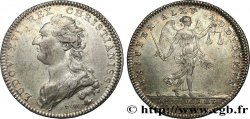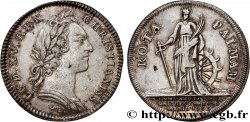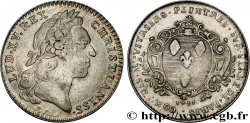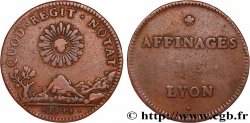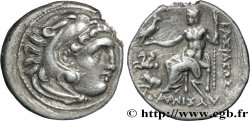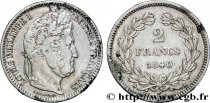Live auction - fjt_587757 - CORPORATIONS CINQUIEME CORPS DES MARCHANDS LES BONNETIERS 1758
Чтобы принять участие в торгах, вы должны войти в систему и стать подтвержденным участником аукциона. Войдите, чтобы сделать ставку. Ваш аккаунт будет подтвержден в течение 48 часов. Не ждите до закрытия торгов, чтобы зарегистрироваться.Сделав ставку на данный товар, вы вступаете в юридическое соглашение на покупку выбранного товара и нажатием кнопки «Сделать ставку» подтверждаете принятие вами условий интернет-аукционов cgb.fr.
Ставка может бить сделана только в полном эквиваленте евро. Торги закроются согласно времени, указанному в описании товара, все ставки, сделанные после закрытия торгов, учитываться не будут. Не следует откладывать предложение вашей ставки до последнего момента, так как система может не успеть обработать вашу заявку, и ваша ставка не будет принята. Более детальную информацию вы найдёте здесь: FAQ по интернет-аукционам.
Все ставки победителей подлежат комиссии 18%.
Все ставки победителей подлежат комиссии 18%.
| Оценить : | 200 € |
| Цена : | Нет ставки |
| Максимальная предлагаемая цена : | Нет ставки |
| Конец торгов : | 28 July 2020 18:39:27 |
Тип CINQUIEME CORPS DES MARCHANDS
LES BONNETIERS
Дата: 1758
Металл: gilt copper
Диаметр: 28 mm
Ориентация осей монеты: 6 h.
Вес: 6,4 g.
Век: cannelée
Редкость: R2
Комментарии о состоянии
Qualité de frappe exceptionnelle
Ссылки в каталоге: :
Лицевая сторона
Аверс: легенда: LUD. XV. REX. CHRISTIANISS.
Аверс: описание: Buste à droite de Louis XV signé m.
Аверс: перевод: Louis XV, roi très chrétien.
Обратная сторона
Реверс: легенда: QUANTOS. DUO. FLECTIT. IN. USUS ; À L'EXERGUE : LES. MDS. BONNETIERS. 1746.
Реверс: Описание: Écu aux armes des Bonnetiers : cinq navires allant à gauche sous une étoile et au-dessous de la Toison d'or couronnée.
Реверс: перевод: Vers combien d'usages il les tourne tous les deux !.
Комментарий
En 1390, on comprend sous le titre de bonnetiers, les aumussiers, les mitainiers et les chapeliers. Dans les premiers temps de la fabrication appelée plus tard bonneterie, on appelait bonnet le fil de laine tissé à la main avec l'aiguille et la broche. Les bonnetiers ont le droit de vendre toutes sortes de bonnets de drap, de laine, ronds ou carrés, des bas, gants, chaussons, camisoles, caleçons, au métier, au tricot ou à l'aiguille, en soie, laine, coton, chanvre ou lin, poil de chameau ou de castor et autres pareilles matières.
Les bonnetiers étaient chargés de tisser à la main le fil de laine avec une aiguille, la bonneterie, ou à l’aide d’une broche, pour le broché ou “jersey”. On les appelait aussi chapeliers, gantiers ou mitainiers mais avec le temps le terme bonnetier devient générique. Leurs statuts sont rédigés en 1550 et confirmés en 1608. En 1660, un arrêt décide qu’ils auront préséance sur les orfèvres et seront désormais au cinquième rang des marchands, ce que rappelle les cinq navires sur leur blason ou au revers de ce jeton. En 1776, unis aux chapeliers et pelletiers ils formeront le troisième des six corps. Au XVIIIe siècle il y a environ 450 maisons de bonneterie à Paris. La devise du revers est strictement liée à la corporation des bonnetiers (F. 4872-4880b).
In 1390, the title of hosier included the almussiers, the mitteners and the hatters.. In the early days of the manufacture later called hosiery, the woolen thread woven by hand with a needle and spindle was called a bonnet.. Hosiery makers have the right to sell all kinds of cloth or woolen caps, round or square, stockings, gloves, slippers, camisoles, underpants, loomed, knitted or needle-knitted, in silk, wool, cotton, hemp or linen, camel or beaver hair and other similar materials..
Hosiery makers were responsible for weaving wool yarn by hand with a needle, hosiery, or using a spindle, for brocade or “jersey”. They were also called hatters, glovers or mitteners but over time the term hosier became generic.. Their statutes were drawn up in 1550 and confirmed in 1608. In 1660, a decree decided that they would have precedence over the goldsmiths and would henceforth be in the fifth rank of merchants, as recalled by the five ships on their coat of arms or on the reverse of this token.. In 1776, united with the hatters and furriers, they formed the third of the six corps. In the 18th century there were around 450 hosiery houses in Paris.. The motto on the reverse is strictly linked to the hosiery guild (F. 4872-4880b)
Les bonnetiers étaient chargés de tisser à la main le fil de laine avec une aiguille, la bonneterie, ou à l’aide d’une broche, pour le broché ou “jersey”. On les appelait aussi chapeliers, gantiers ou mitainiers mais avec le temps le terme bonnetier devient générique. Leurs statuts sont rédigés en 1550 et confirmés en 1608. En 1660, un arrêt décide qu’ils auront préséance sur les orfèvres et seront désormais au cinquième rang des marchands, ce que rappelle les cinq navires sur leur blason ou au revers de ce jeton. En 1776, unis aux chapeliers et pelletiers ils formeront le troisième des six corps. Au XVIIIe siècle il y a environ 450 maisons de bonneterie à Paris. La devise du revers est strictement liée à la corporation des bonnetiers (F. 4872-4880b).
In 1390, the title of hosier included the almussiers, the mitteners and the hatters.. In the early days of the manufacture later called hosiery, the woolen thread woven by hand with a needle and spindle was called a bonnet.. Hosiery makers have the right to sell all kinds of cloth or woolen caps, round or square, stockings, gloves, slippers, camisoles, underpants, loomed, knitted or needle-knitted, in silk, wool, cotton, hemp or linen, camel or beaver hair and other similar materials..
Hosiery makers were responsible for weaving wool yarn by hand with a needle, hosiery, or using a spindle, for brocade or “jersey”. They were also called hatters, glovers or mitteners but over time the term hosier became generic.. Their statutes were drawn up in 1550 and confirmed in 1608. In 1660, a decree decided that they would have precedence over the goldsmiths and would henceforth be in the fifth rank of merchants, as recalled by the five ships on their coat of arms or on the reverse of this token.. In 1776, united with the hatters and furriers, they formed the third of the six corps. In the 18th century there were around 450 hosiery houses in Paris.. The motto on the reverse is strictly linked to the hosiery guild (F. 4872-4880b)







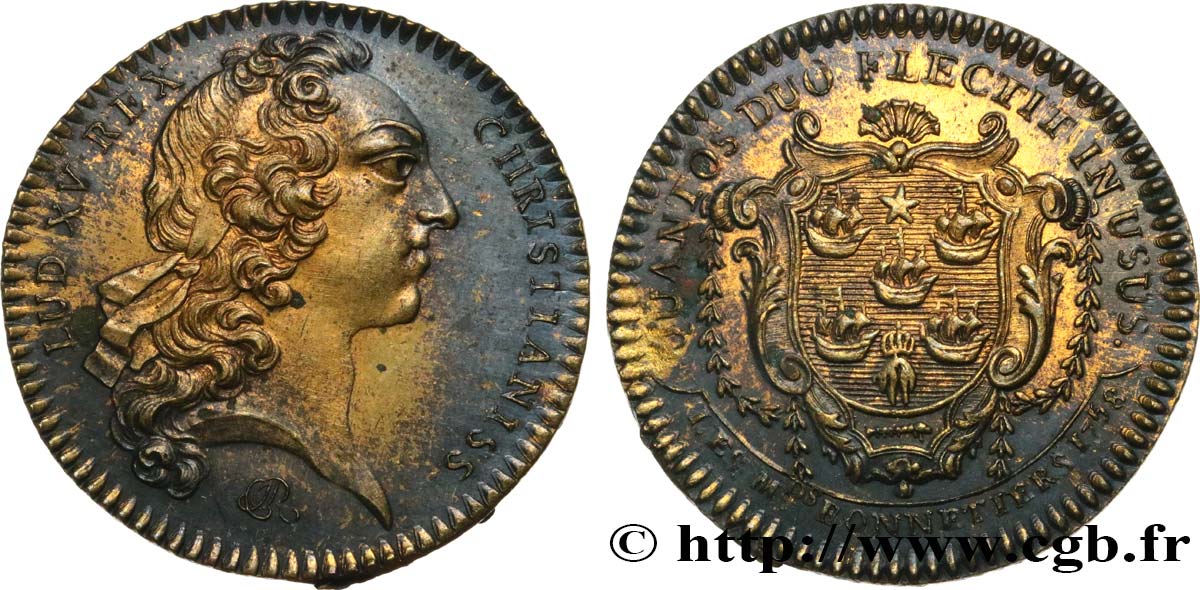
 Cообщить об ошибке
Cообщить об ошибке Распечатать страницу
Распечатать страницу Отправить мой выбор
Отправить мой выбор Задать вопрос
Задать вопрос Consign / sell
Consign / sell
 Информация
Информация
